
JAVA for Beginners, 2nd Edition
- Author: Danny POO
- Publisher: Lulu.com
- Date: June 2011
- Buy Book From: available at this WEBSITE
- Synopsis:
This book teaches and demonstrates the fundamentals of Java. Designed for readers with no prior knowledge in computer programming, this book is unassuming and guides readers in every step of the learning process. It is a book crafted with the novice in mind. Complete source code is provided in every example so that readers can appreciate how a problem can be solved using Java. Where applicable, screen-shots showing the development of application programs are provided to help readers in their practices. If you have no knowledge in writing computer programs and would like a book to guide you in Java programming, then this book is right for you!
Topics covered include: variables; data structures; operators; computer program compilation and execution; program structures; data types and declaration; expressions, statements, and operators; control flow and arrays; inputs and outputs; methods; and object-oriented programming. In addition, this book covers the Java Application Programming Interface (API) - a rich Java class library.
|
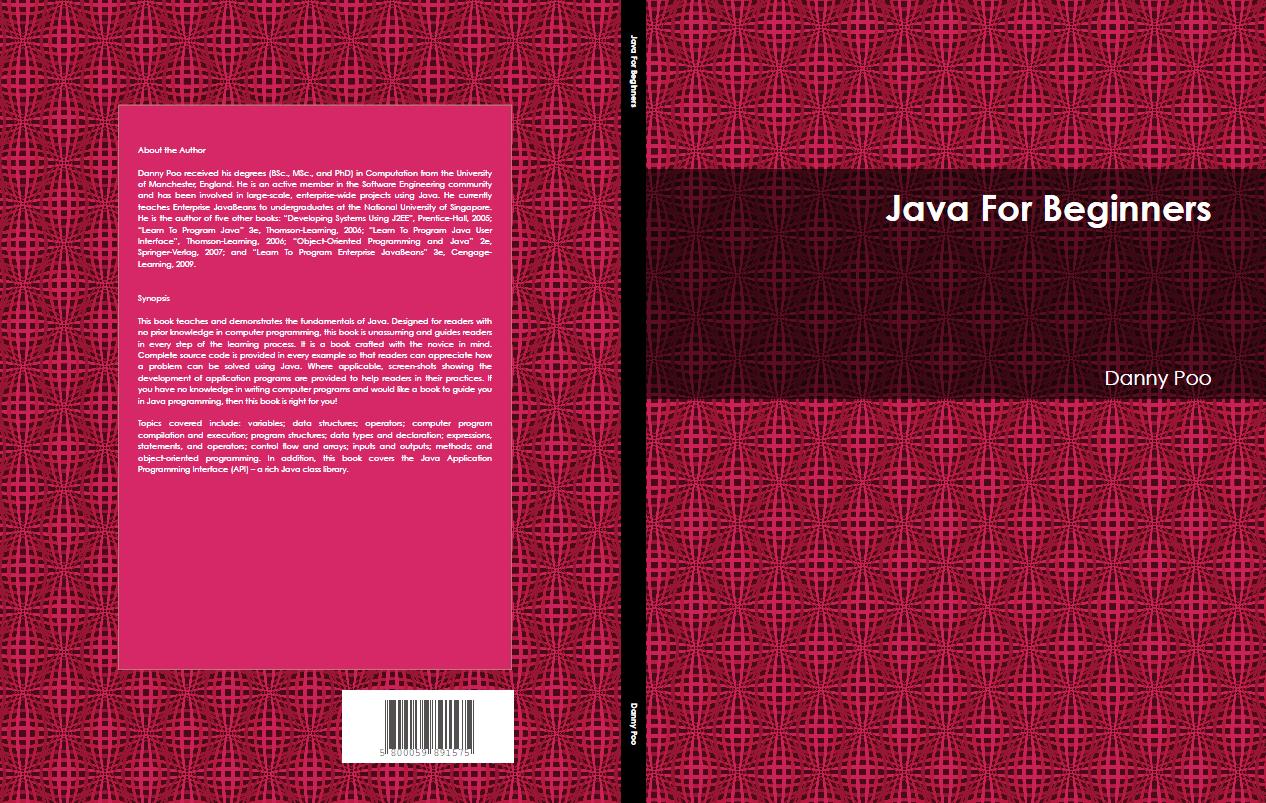
|
Object-Oriented Programming in JAVA, 2nd Edition
- Author: Danny POO
- Publisher: Lulu.com
- Date: June 2011
- Buy Book From: available at this WEBSITE
- Synopsis:
This book teaches object-oriented programming in Java. Designed for readers with basic knowledge of Java programming, this book is unassuming and guides readers in every step of the object-oriented programming process. It is a book crafted with the reader in mind. Complete source code is provided in every example, and where applicable, screen-shots showing the development of application programs are included to help readers in their practices. Topics covered include: object; class; single class inheritance; encapsulation; polymorphism; abstract class, abstract method, inner class, method overriding, multiple class inheritance and interface.
|
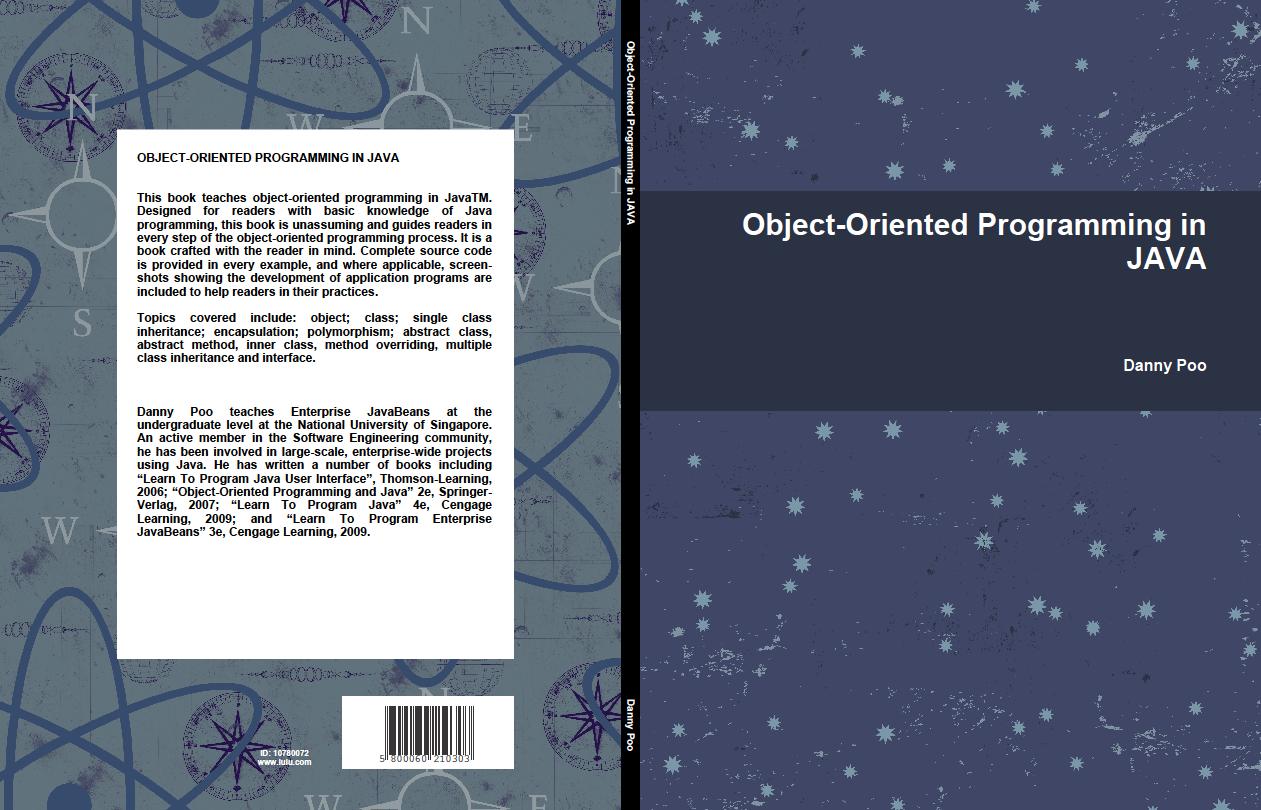
|
JAVA Graphical User Interface Programming, 2nd Edition
- Author: Danny POO
- Publisher: Lulu.com
- Date: June 2011
- Buy Book From: available at this WEBSITE
- Synopsis:
"Java Graphical User Interface Programming" focuses on the development of graphical user interface design in Java. Readers are assumed to have prior knowledge in Java programming. "Java Graphical User Interface Programming" contains substantial resources to help readers learn graphical user interface programming in a systematic and fundamentals-first way. Topics covered in this book include: the Java Graphical User Interface (GUI) model, windows, frames, layout managers, panels, components, text fields, buttons, lists, dialogs, menus, and event handling in interactive user interface design. This text may be used as a basic text for teaching GUI programming in Java.
|
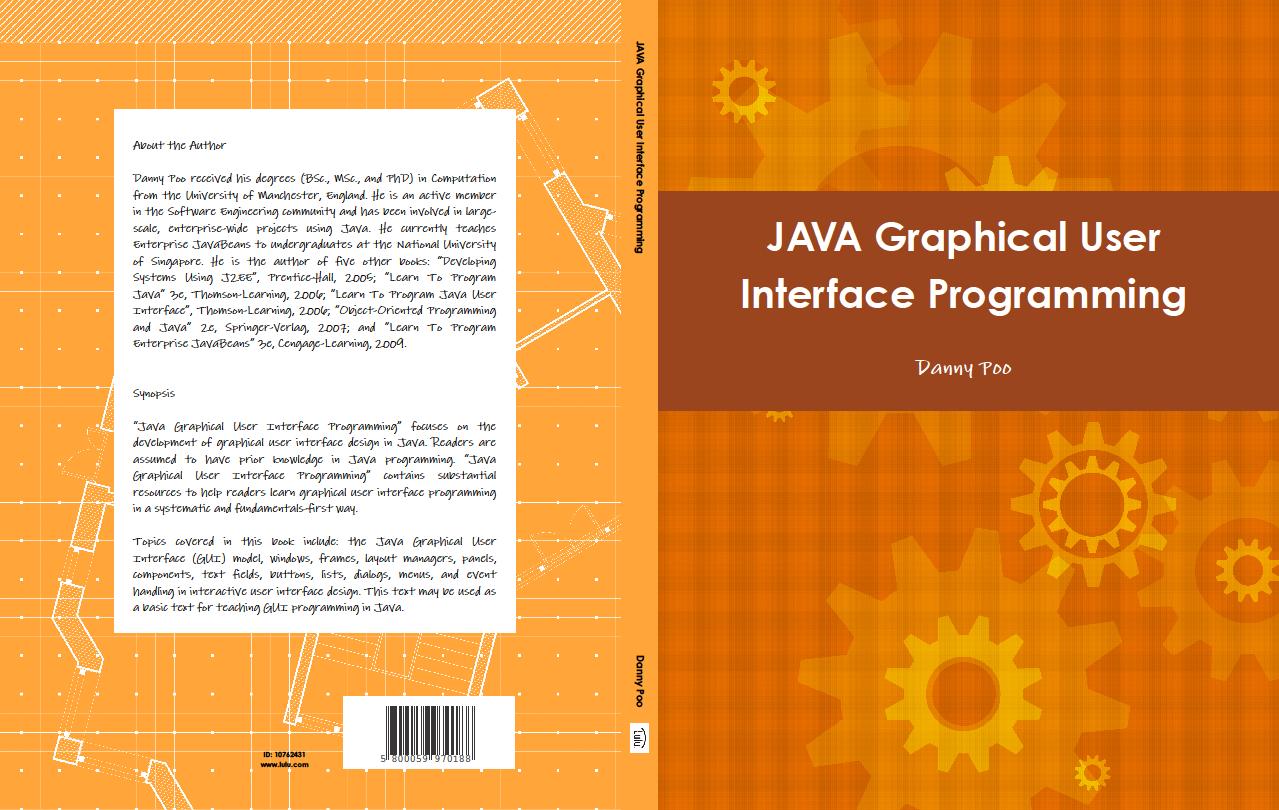
|
Learn to Program Enterprise JavaBeans 3.0, 3rd Edition
- Author: Danny C.C. POO
- Publisher: Cengage Learning
- ISBN: 9789814272025
- Date: August 2009
- Synopsis:
Enterprise JavaBeans (EJB) is a server-side component architecture for the development and deployment of component-based, distributed business applications. It is developed as a solution for producing scalable, transactional, and multi-user secure business applications. EJB is currently EJB 3.0 and constitutes a part of the larger and comprehensive Java EE platform. This book focuses on teaching the motivation behind EJB 3.0, and the nuts and bolts in learning the implementation of EJB 3.0 multi-tier business applications. It follows a fundamentals-first approach to teaching and learning Enterprise JavaBeans. Readers who are new to developing component-based software applications will find the use of fundamentals-first approach easier to follow and understand. If you are a beginner to developing large-scale, multi-tier, distributed computer systems, this book is the book for you as it will ease your understanding in the application of Enterprise JavaBeans. Topics covered include: Distributed Computing, Remote Method Invocation over Internet Inter-Object-Request-Broker Protocol (RMI-IIOP), Java EE technologies, Motivations for Enterprise JavaBeans architecture, EJB architecture, Session Beans, Java Message Service, Message-Driven Beans, Java Persistence API, Entities, Entity Relationships, Annotations, and Web-based Clients.
|
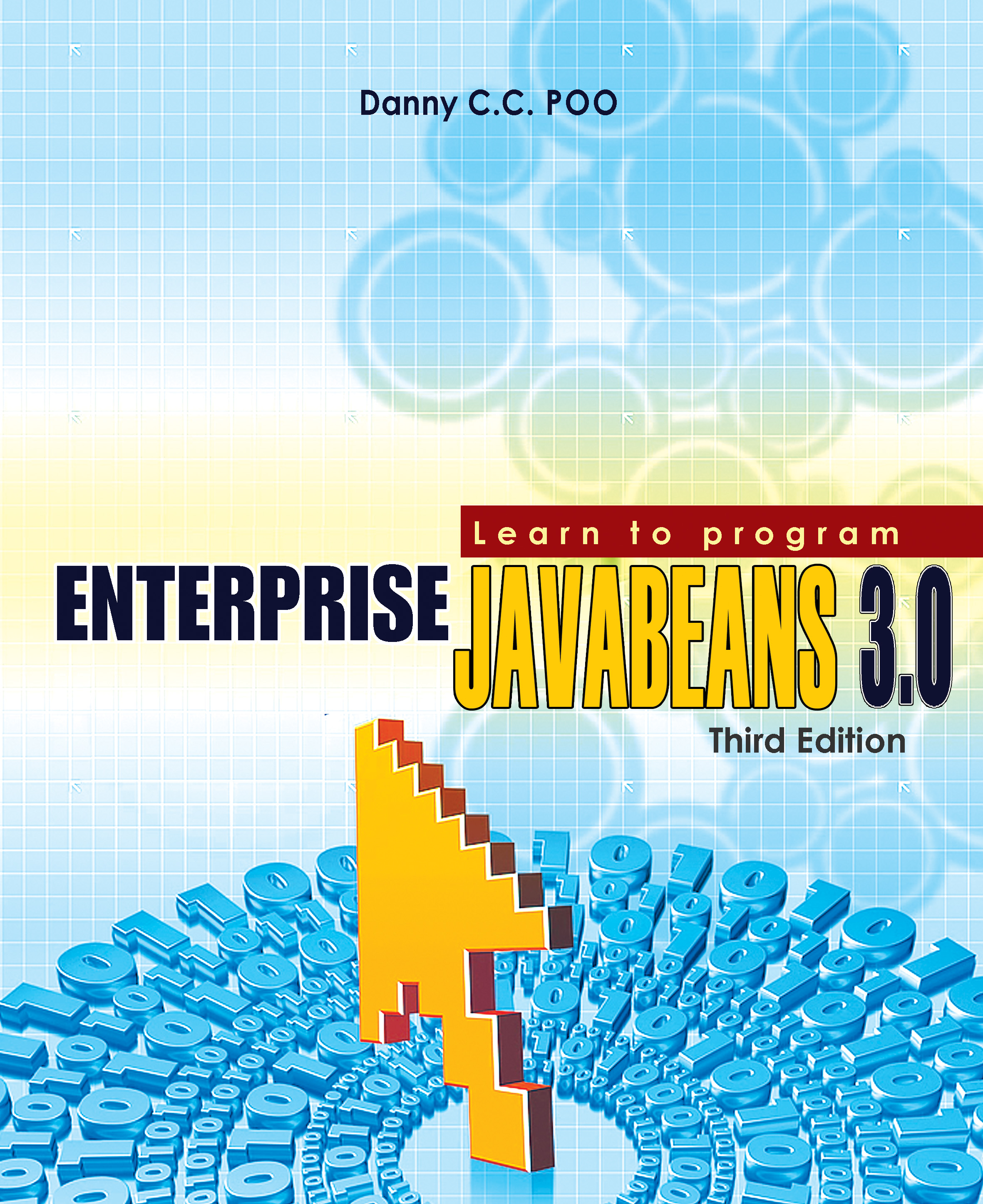
|
Learn to Program Enterprise JavaBeans 3.0, 2nd Edition
- Author: Danny C.C. POO
- Publisher: Thomson Learning
- ISBN: 978-981-4239-15-8 or 981-4239-15-1
- Date: August 2007
- Synopsis:
Enterprise JavaBeans (EJB) is a server-side component architecture for the development and deployment of component-based, distributed business applications. It is developed as a solution for producing scalable, transactional, and multi-user secure business applications. EJB is currently EJB 3.0 and constitutes a part of the larger and comprehensive Java EE platform. This book focuses on teaching the motivation behind EJB 3.0, and the nuts and bolts in learning the implementation of EJB 3.0 multi-tier business applications. It follows a fundamentals-first approach to teaching and learning Enterprise JavaBeans. Readers who are new to developing component-based software applications will find the use of fundamentals-first approach easier to follow and understand. If you are a beginner to developing large-scale, multi-tier, distributed computer systems, this book is the book for you as it will ease your understanding in the application of Enterprise JavaBeans. Topics covered include: Distributed Computing, Remote Method Invocation over Internet Inter-Object-Request-Broker Protocol (RMI-IIOP), Java EE technologies, Motivations for Enterprise JavaBeans architecture, EJB architecture, Session Beans, Java Message Service, Message-Driven Beans, Java Persistence API, Entities, Entity Relationships, Annotations, and Web-based Clients.
|
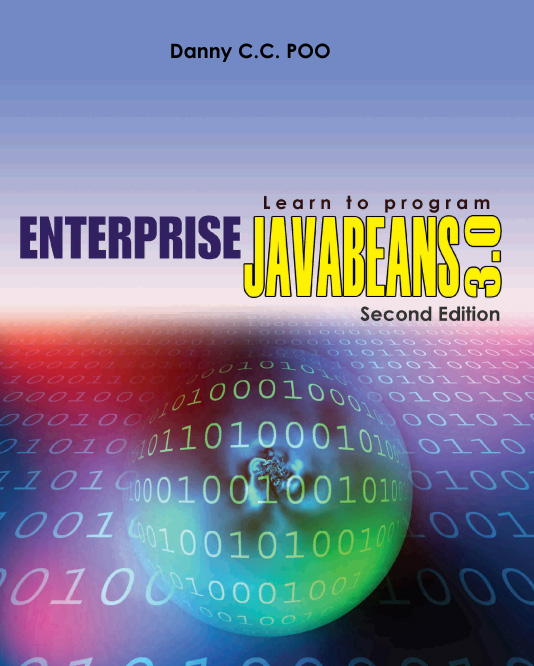
|
Learn to Program Java, 4th Edition
- Authors: Danny C.C. POO, Chee-Seong TAN
- Publisher: Cengage Learning
- ISBN:
- Date: April 2009
- Synopsis:
This book is designed for readers with no knowledge of programming. It teaches Java programming through a "fundamentals-first" approach. Fundamental concepts of Java are taught before more difficult concepts are introduced in the later chapters. Programming fundamentals such as variables, data structures, operators, computer program compilation and execution are covered in the initial chapters. The rest of the book builds on the fundamentals to prepare readers for more complex concepts such as: program structures; data types and declaration; expressions, statements, and operators; control flow and arrays; inputs and outputs; methods; object-oriented programming; encapsulation and polymorphism; inheritance; and interface. In addition, this book covers the Java Application Programming Interface (API) - a rich Java class library. This book may be used as a basic text for teaching programming fundamentals and Java as a first language in programming.
- Buy Book From: Cengage Learning or Amazon.com
|
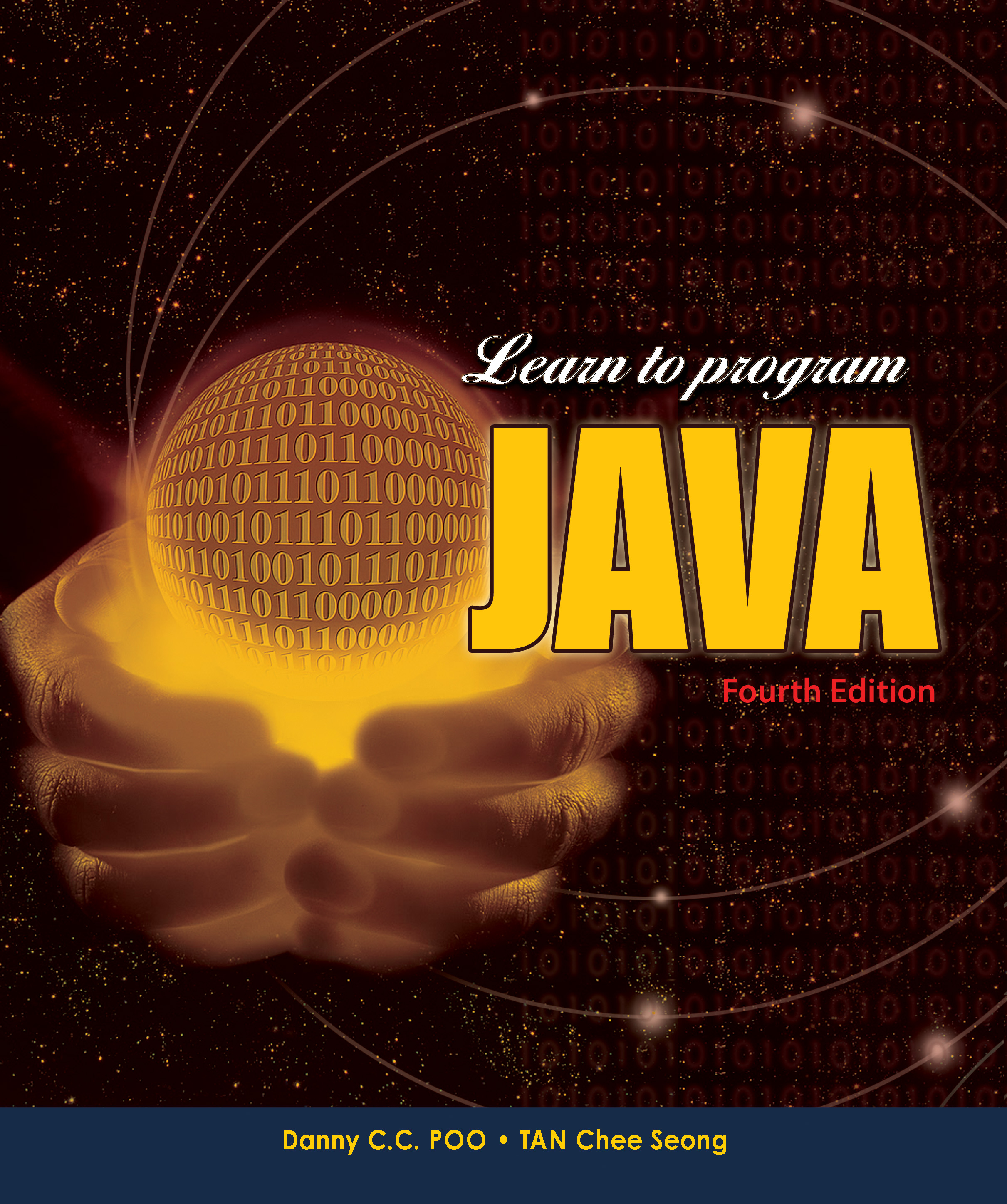
|
Learn to Program Java, 3rd Edition
- Authors: Danny C.C. POO, Chee-Seong TAN
- Publisher: Thomson Learning
- ISBN: 981-244-728-8
- Date: April 2006
- Synopsis:
This book is designed for readers with no knowledge of programming. It teaches Java programming through a "fundamentals-first" approach. Fundamental concepts of Java are taught before more difficult concepts are introduced in the later chapters. Programming fundamentals such as variables, data structures, operators, computer program compilation and execution are covered in the initial chapters. The rest of the book builds on the fundamentals to prepare readers for more complex concepts such as: program structures; data types and declaration; expressions, statements, and operators; control flow and arrays; inputs and outputs; methods; object-oriented programming; encapsulation and polymorphism; inheritance; and interface. In addition, this book covers the Java Application Programming Interface (API) - a rich Java class library. This book may be used as a basic text for teaching programming fundamentals and Java as a first language in programming.
- Buy Book From: Cengage Learning or Amazon.com
|
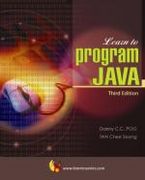
|
Learn to Program Java User Interface
- Authors: Danny C.C. POO, Chee-Seong TAN
- Publisher: Thomson Learning
- ISBN: 978-981-243-515-6 or 981-243-515-8
- Date: 2007
- Synopsis:
This book is a complementary text to an earlier book on ?Learn To Program Java?. It covers topics that were not included in the earlier text. ?Learn To Program Java User Interface? focuses on the development of graphical user interface in Java. Readers are assumed to have prior knowledge in Java programming, the subject of discussion of ?Learn To Program Java?. Topics covered in this book include: the Java Graphical User Interface (GUI) model, windows, frames, layout managers, panels, components, text fields, buttons, lists, dialogs, menus, and event handling in interactive user interface design. This text may be used as a basic text for teaching GUI programming in Java or combined with ?Learn To Program Java? for a more complete reading of Java and its technologies.
|
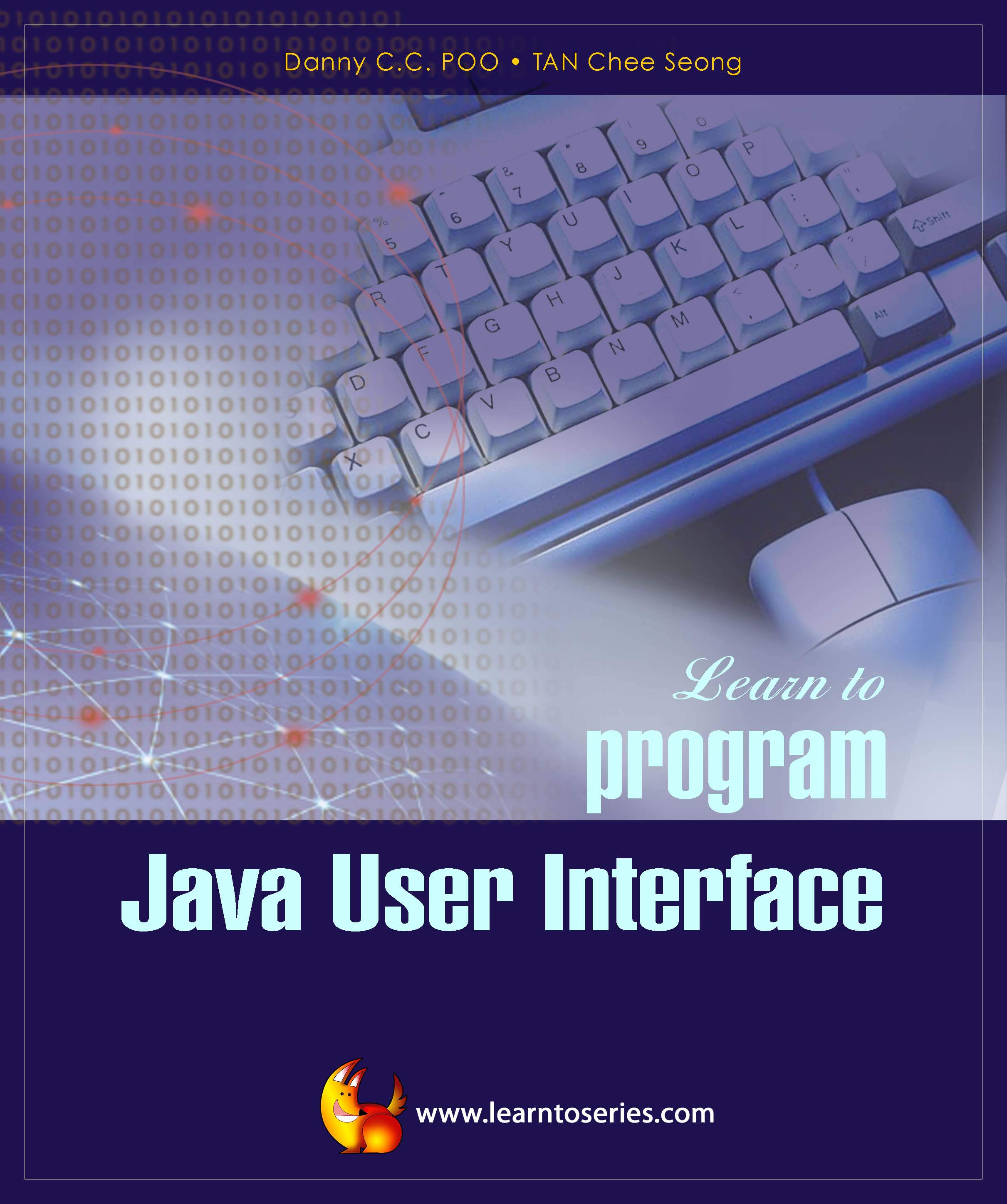
|
Object-Oriented Programming and Java, 2nd edition
- Authors: Danny C.C. POO, Derek B.K. KIONG, Swarnalatha Ashok
- Publisher: Springer-Verlag
- ISBN: 978-1-84618-961-0
- Date: 2007
- Synopsis:
Object-Oriented Programming and Java presents two important topics in contemporary software development: object-oriented programming and Java. This book takes a different teaching approach from most available literature, it begins with the description of real-world object interaction scenarios and explains how they can be translated, represented and executed using object-oriented programming paradigm. Principally, Java is an object-oriented programming language. By establishing a solid foundation in the understanding of object-oriented programming concepts and their applications, the book provides readers with the pre-requisites for writing proper object-oriented programs using Java. Object-Oriented Programming and Java covers the latest in Java technologies and is suitable for undergraduate or postgraduate courses on object-oriented technology, and in particular, using Java as a programming language for creating object-oriented programs.
- Buy Book From: Amazon.com
|

|
Learn to Program Enterprise JavaBeans
- Author: Danny C.C. POO
- Publisher: Thomson Learning
- ISBN: 981-265-630-8
- Date: August 2005
- Synopsis:
This text is part of the "Learn To Program" series on Java programming. It builds on the fundamentals of the earlier text on "Learn To Program Java" to discuss more advanced topics on distributed, component-based programming. The focus of this book is primarily on the teaching of Enterprise JavaBeans (EJB) using the Java 2 Enterprise Edition (J2EE) architecture. Topics covered include: distributed computing, Remote Method Invocation (RMI), Remote Method Invocation over Internet-ORB Protocol (RMI-IIOP), Enterprise JavaBeans, Session Beans, Entity Beans, Bean-Managed Persistent Entity Beans, Container-Managed Persistent Entity Beans, deployment, and server container. Other associated topics covered in this book include: database programming using JDBC (Java Database Connectivity), and JNDI (Java Naming Directory Interface). This text assumes readers are familiar with the basics of Java programming, the syntax of Java and its execution method. Following the "fundamentals first" approach of the "Learn To Program" series, this book teaches Enterprise JavaBeans in an easy-to-understand, step-by-step approach.
|
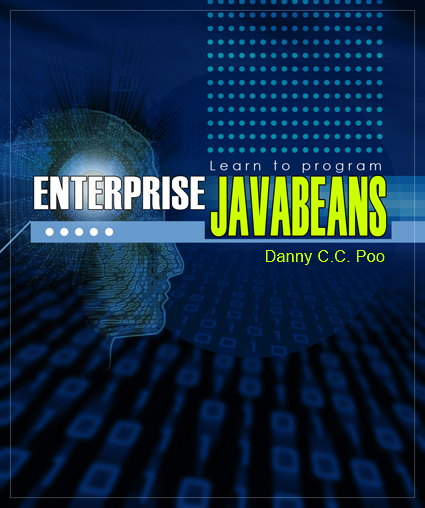
|
Developing Systems Using J2EE
- Authors: Danny C.C. POO, Jie-Mein GOH, Chee-Wee TAN
- Publisher: Pearson Prentice-Hall
- ISBN: 981-244-646-X
- Date: January 2004
- Synopsis:
Object oriented programming (OOP) is ubiquitous in today's computing practices. J2EE (Java 2 Platform, Enterprise Edition) is a software architecture that embraces object oriented programming concepts and encourages the development of flexible and maintainable software systems. This text discusses the development of software systems using the J2EE architecture. In particular, it relates Software Engineering principles with the development of large-scale software systems using the J2EE architecture. In addition, this text records the experiences and advice against common mistakes in the use of J2EE. The readers are assumed to have knowledge of Java, object oriented programming concepts and the software development lifecycle.
|
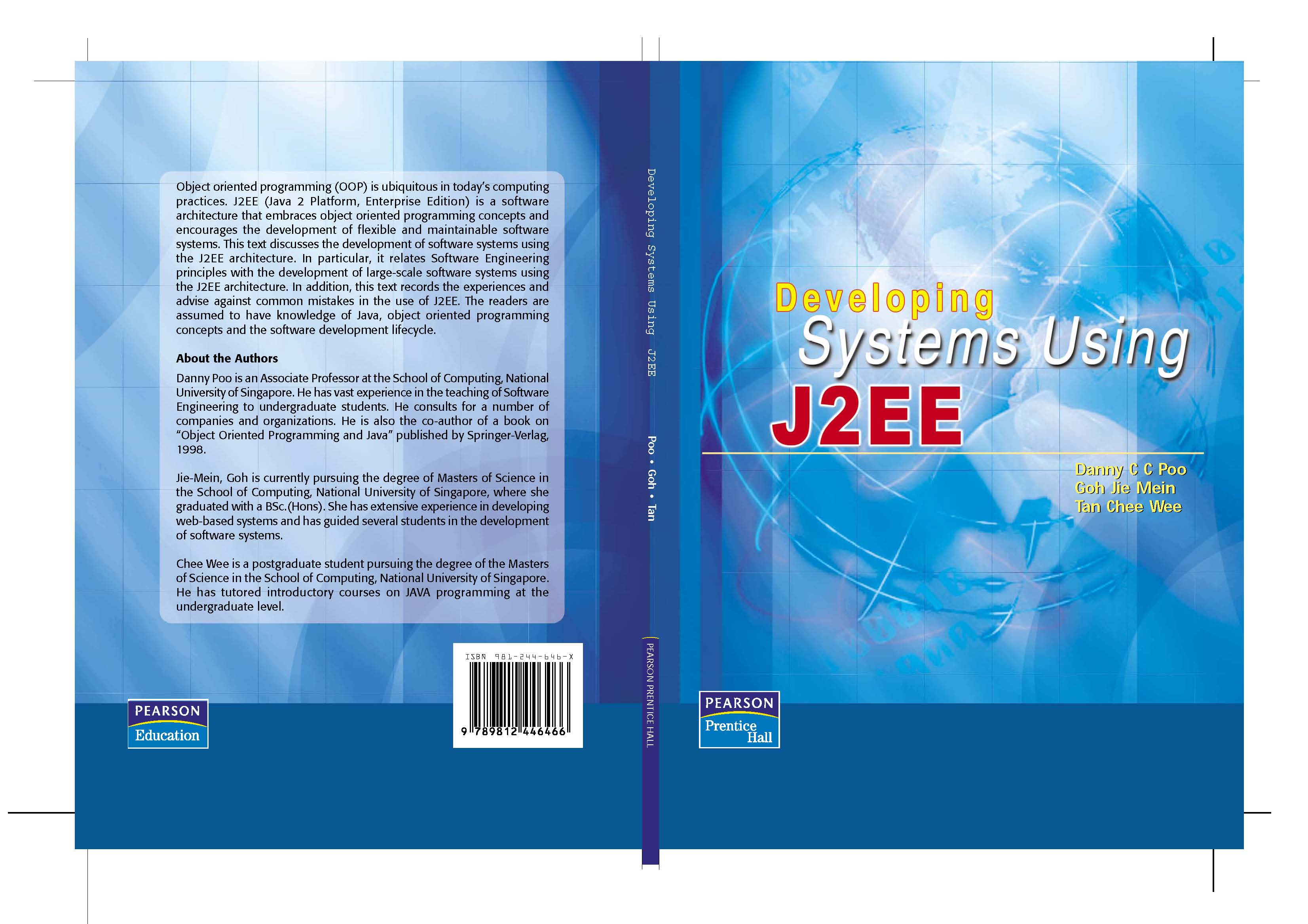
|
Learn to Program Java
- Authors: Danny C.C. POO, Chee-Seong TAN, Raymond TAN
- Publisher: Pearson Prentice-Hall
- ISBN: 981-244-728-8
- Date: June 2004
- Synopsis: There are two components in the design of this text. Both of them are reflected in the title of the book. The first is "Learn to Program" and the other is "Java". Students will be taught programming fundamentals such as data structures, operations, compiling and executing programs. The second component focuses on the teaching of Java as a programming language: program structures; data types and declaration; expressions, statements, and operators; control flow and arrays; inputs and outputs; methods; object-oriented programming; encapsulation and polymorphism. The text also covers the Java Application Programming Interface (API). This text may be used as a basic text for teaching programming fundamentals and for teaching Java as a first language in programming. It assumes students have no knowledge on how software programs are written.
|
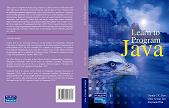
|
Object-Oriented Programming and Java
- Authors: Danny C.C. POO, Derek B.K. KIONG
- Publisher: Springer-Verlag
- ISBN: 981-3083-96-4
- Date: 1998
- Synopsis:
This book teaches two important topics in contemporary software development: object-oriented programming and the Java programming language. The method of teaching object-oriented programming in the book takes a different approach from most available literature. The book begins with the description of real-world object interaction scenarios and explain how they can be translated, represented and executed using object-oriented programming paradigm. Since Java is an object-oriented programming language, it is taught as a language for realizing the many good software engineering principles and concepts as practised in object-oriented programming. By establishing a solid foundation in the understanding of object-oriented programming concepts and their applications, the book provides readers with the pre-requisites for writing good object-oriented programs using Java. Object-Oriented Programming and Java is suitable for an undergraduate or postgraduate course teaching on object-oriented technology, and in particular, using Java as a programming language for creating object-oriented programs.
|
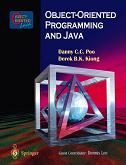
|
|
|
 School
of Computing :: Department
of Information Systems :: Cicada Cube Pte Ltd
School
of Computing :: Department
of Information Systems :: Cicada Cube Pte Ltd









